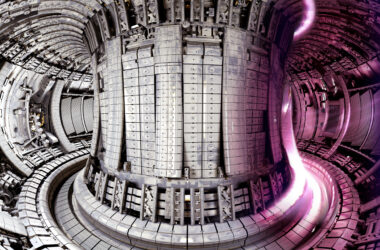The UK Atomic Energy Authority (UKAEA), in partnership with global entities including CERN and EUROfusion, is embarking on a new project examining how electronics hold up under challenging fusion energy conditions. The Joint European Torus (JET) facility, a leading Fusion research facility, looks like a battleground from the perspective of modern electronics, which face the onslaught of high-energy neutrons.
.
Fusion energy mimics the Sun’s energy production mechanism. At JET, magnetic fields imprison superheated plasma, initiating a reaction where hydrogen isotopes interact and combine under extreme temperatures, reaching levels ten times hotter than the core of the Sun. This celestial dance releases neutrons with energy capable of disrupting the most robust electronic devices. Data corruption and circuit errors are not anomalies but expectations in this environment.
This fusion environment, rich in neutrons, poses a significant challenge to the integrity of electronic components. These components, essential for monitoring and controlling plasma conditions, ensure the safety and operational integrity of tokamaks and auxiliary systems.
Lee Packer, a figure of authority in nuclear science at UKAEA, underscores the gravity of understanding the neutron-rich environment. “Understanding how electronic components react to the characteristic neutron-rich environment presented by fusion is one such example, as it can influence how those components are designed, protected and incorporated within future fusion machines. The resulting data and learnings from these experiments are expected to be applicable across the fusion sector, including ITER, DEMO and STEP, and adjacent industries that need to use electronics in extreme environments.” [source]
The data and insights from the experiments at JET are not confined to academic corridors but find resonance in the fusion sector and industries where electronics confront extreme environments.
Two test benches, instrumental in measuring Single Event Effects (SEE), unveil the narrative of electronics under neutron impact. The real-time neutronics study, spanning seven weeks, is not a solitary endeavour but a symphony of collaborative effort. Dr. Martin Dentan, leading the SEE experiments, anticipates the findings to illuminate the path to defining the requisite shielding for electronics in future tokamaks.
“The results from the JET experiments will feed into models and methods to be used in a forthcoming detailed study on the sensitivity of modern general electronics to neutron-induced SEEs. The results of this forthcoming detailed study will make it possible to define the shielding needed to ensure in a tokamak a neutron environment demonstrated to be equivalent to the natural terrestrial environment, for which general electronics are designed and qualified by manufacturers. This will eliminate the need for neutron qualification, which would otherwise be necessary for commercial off-the-shelf (COTS) electronics. The feasibility of this qualification is impeded by their excessive diversity and the lack of traceability of their constituents. The SEE experiments at JET are therefore essential for this forthcoming detailed study, which will be indispensable to ensure the reliability of critical and safety electronics in the neutron environment of future tokamaks, such as ITER and DEMO.[source]”
The resulting data and learnings from these experiments are expected to be applicable across the fusion sector, including the International Thermonuclear Experimental Reactor (ITER), DEMOnstration Power Plant (DEMO), and Spherical Tokamak for Energy Production (STEP), and adjacent industries that need to use electronics in extreme environments. The experiments at JET, a precursor to detailed studies, are instrumental in ensuring the reliability of critical and safe electronics in the neutron environment of future fusion reactors.
The neutron impact on electronics is not just confined to fusion energy but also impacts the automotive, avionics, and space industries. The insights from the study should inform the design, protection, and incorporation of electronic components in various applications.
JET’s findings, foundational for the International Thermonuclear Experimental Reactor (ITER) and the European DEMOnstration Power Plant (DEMO) prototype fusion plant, underscore the global significance of fusion energy. These experiments represent a starting point and hopefully lead to a future where fusion energy transitions from theoretical discussions to a concrete contributor to the global energy landscape.
TLDR:
- An international collaboration, including UKAEA and CERN, conducts experiments at the JET facility to study the effects of high-energy neutrons on electronics in fusion energy environments.
- The study aims to understand and mitigate data corruption and circuit errors caused by neutron exposure, which is essential for the safety and operation of future fusion reactors.
- Findings will influence the design and protection of electronics, with implications extending beyond fusion energy to the automotive, avionics, and space industries.








